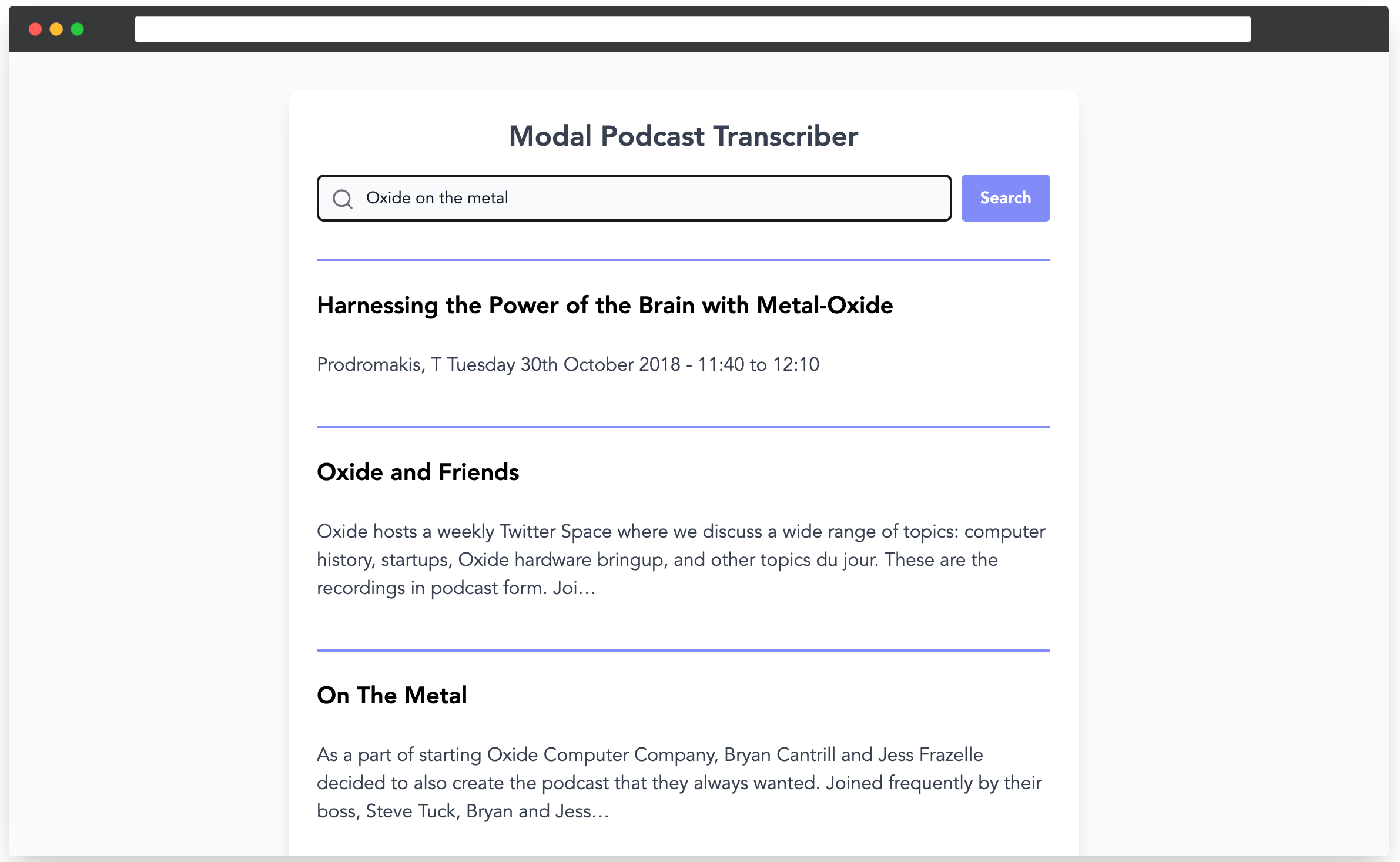Parallel podcast transcription using Whisper
This example shows how to build a massively parallel application on Modal: the Modal Podcast Transcriber.
This example application is more feature-packed than others, and it doesn’t fit in a single page of code and commentary. So instead of progressing through the example’s code linearly, this document provides a higher-level walkthrough of how Modal is used to do fast, on-demand podcast episode transcription for whichever podcast you’d like.
You can find the code here.
Hour-long episodes transcribed in just 1 minute
The focal point of this demonstration app is that it does serverless CPU transcription across dozens of containers at the click of a button, completing hour-long audio files in just 1 minute.
We use a podcast metadata API to allow users to transcribe an arbitrary episode from whatever niche podcast they desire — how about The Pen Addict, a podcast dedicated to stationery?
The video below shows the 45-minute long first episode of Serial season 2 get transcribed in 62 seconds.
Each transcription segment includes links back to the original audio.
Try it yourself
If you’re itching to see this in action, here are links to begin transcribing three popular podcasts:
Tech-stack overview
The entire application is hosted serverlessly on Modal and consists of these main components:
- A React + Vite single page application (SPA) deployed as static files into a Modal web endpoint.
- A Python backend running FastAPI in a Modal web endpoint.
- The Podchaser API provides podcast search and episode metadata retrieval. It’s hooked into our code with a Modal Secret.
- A Modal async job queue, described in more detail below.
All of this is deployed with one command and costs $0.00 when it’s not
transcribing podcasts or serving HTTP requests.
Speed-boosting Whisper with parallelism
Modal’s dead-simple parallelism primitives are the key to doing the transcription so quickly. Even with a GPU, transcribing a full episode serially was taking around 10 minutes.
But by pulling in ffmpeg with a simple .pip_install("ffmpeg-python") addition to our Modal Image, we could exploit the natural silences of the
podcast medium to partition episodes into hundreds of short segments. Each
segment is transcribed by Whisper in its own container task,
and when all are done we stitch the segments back together with only a
minimal loss in transcription quality. This approach actually accords quite well
with Whisper’s model architecture:
“The Whisper architecture is a simple end-to-end approach, implemented as an encoder-decoder Transformer. Input audio is split into 30-second chunks, converted into a log-Mel spectrogram, and then passed into an encoder.”
Run this app on Modal
All source code for this example can be found on GitHub.
The README.md includes instructions on setting up the frontend build and
getting authenticated with the Podchaser API. Happy transcribing!
